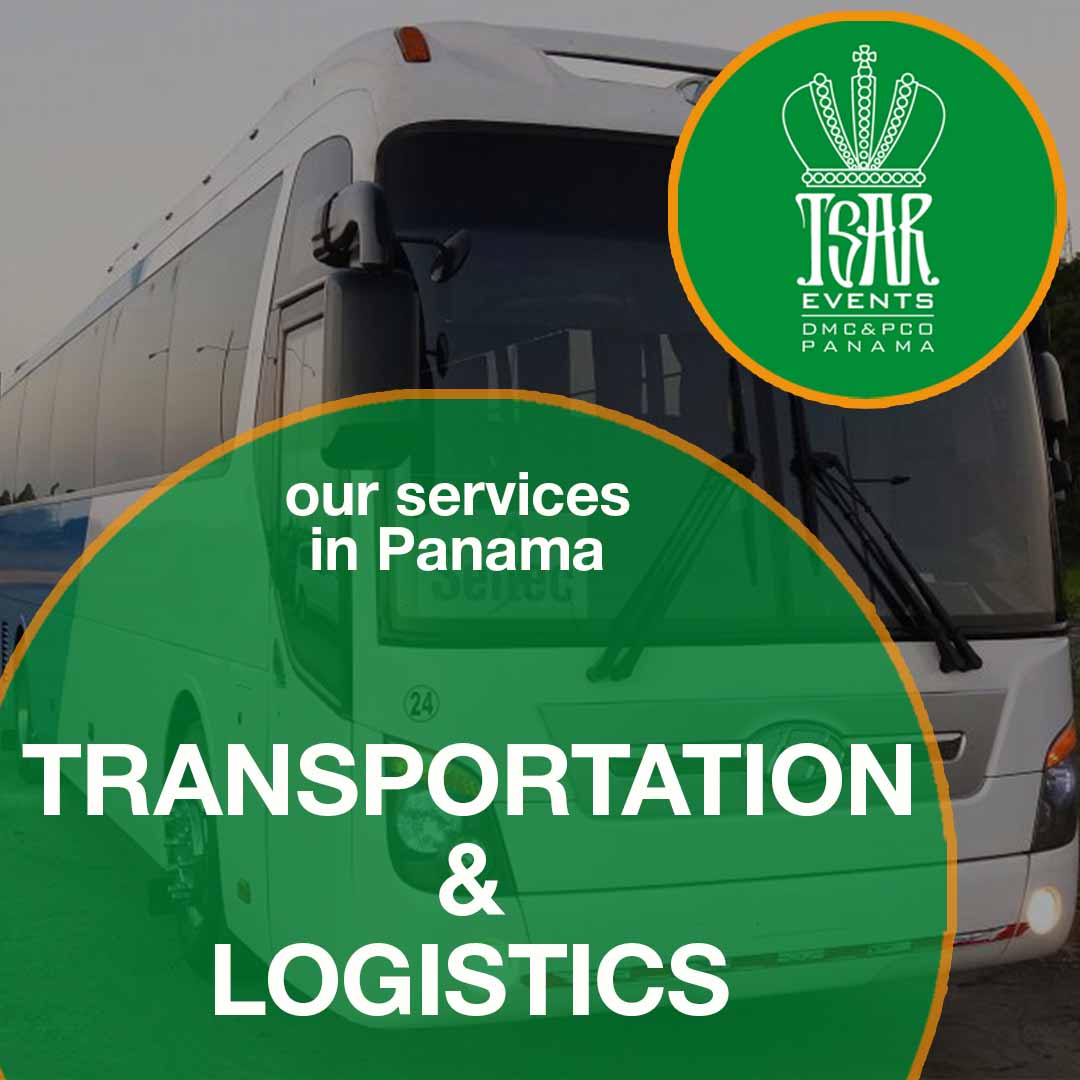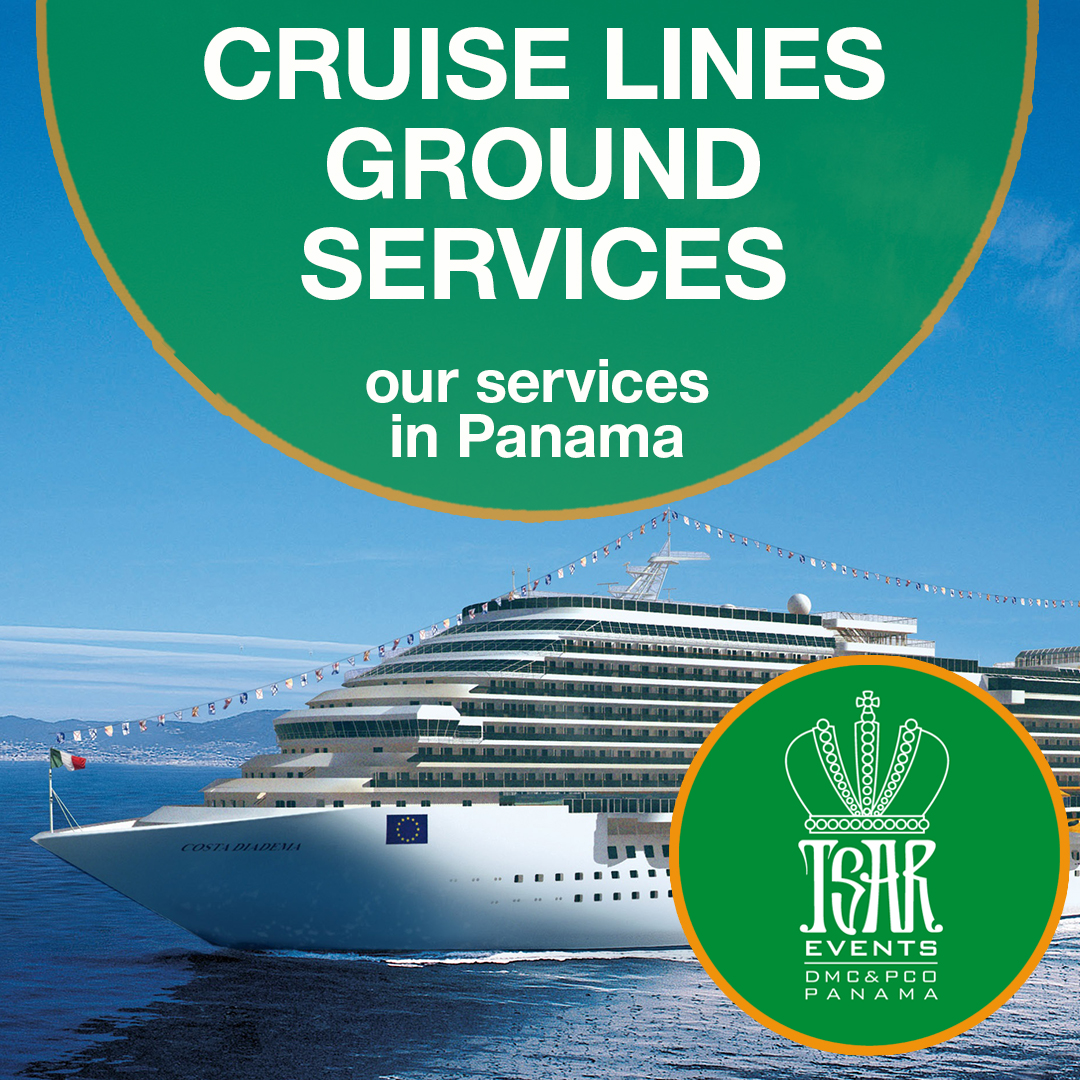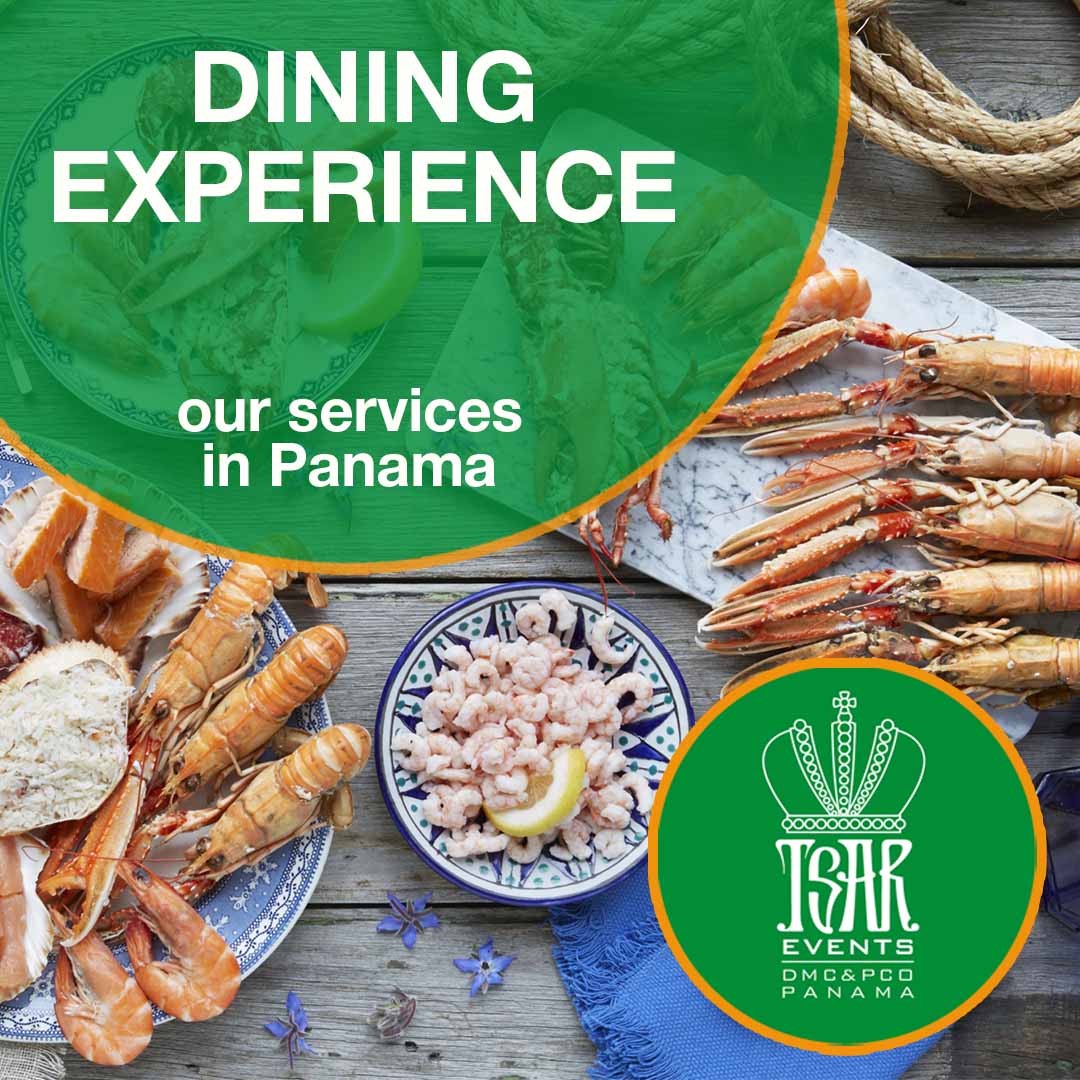Must visit in Panama
- Visit to the Panama Canal - one of the 7 Wonders of the Modern World
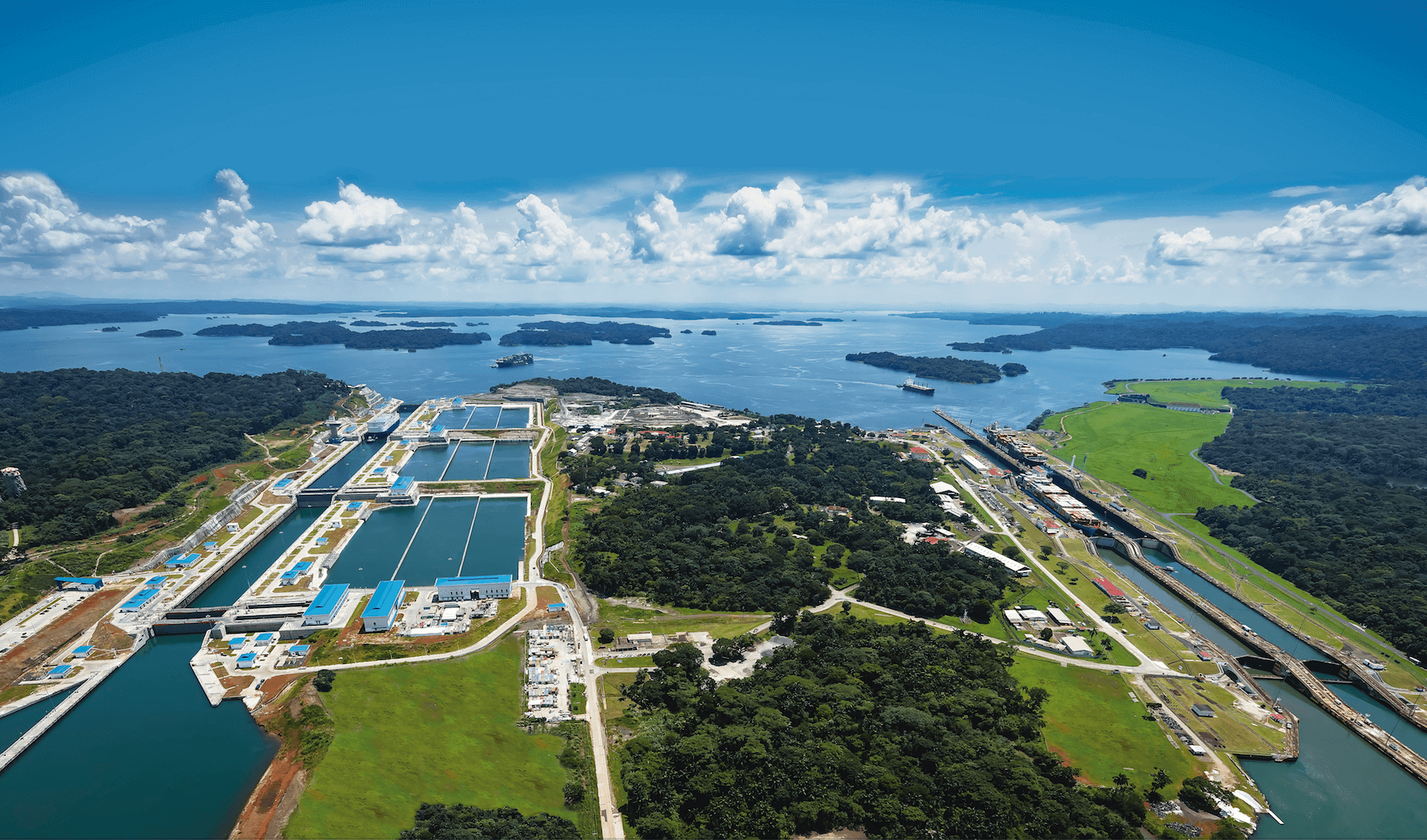
Arguably the most famous attraction in Panama is the Panama Canal. As one of the 7 Wonders of the Modern World, the Panama Canal is a must-see for anyone traveling in the country. Built to dramatically decrease the travel time for ships between the Pacific Ocean and Caribbean Sea, the Canal has seen over 900,000 vessels and counting. At one point this engineering miracle was considered impossible to build, but today, you can see it for yourself.
Miraflores Locks at the Panama Canal Visitors Center is the perfect place to witness how the Panama Canal works. From the observation decks, visitors may watch the lock gates open and close as vessels begin or end their transit. Through the exhibitions, you can learn about the Panama Canal’s history, its impact on international trade, how it works, its close relationship with nature and the Canal Expansion. A 3D movie portrays the story of the waterway.
2. Visit to the remaining parts of the original Panama City - Panama Viejo
.jpg)
Venture to the eastern suburbs of Panama City and you’ll find the remaining parts of the original Panama City, and former capital of the country. Now a UNESCO Cultural World Heritage Site, the settlement dates back to 1519, when Pedro Arias Dávilla and 100 other inhabitants made it their home. The area now known as Panama Viejo was the first permanent European Settlement on the Pacific Ocean.
Initially Panama’s function was closely linked to the conquest expeditions that were heading to South America, but its strategic role as the axis of one of the most important commercial routes of the time placed the city in a privileged position and marked from then on its destiny as a territory at the service of international transit.
In 1671 the city was destroyed by an attack led by the English pirate Henry Morgan, and it was never rebuilt. The remains of the old city were abandoned for more than two centuries. This radical abandonment allowed for the long-term conservation of the historical and archaeological remains of the important buildings and structures, while the city’s activity was transferred to what is currently known as the Old Quarter or Casco Antiguo.
As you wander, keep in mind that the layout and scale of Old Panama remains largely unchanged from the original form, and no architectural renovations have been made—this means you’ll have the rare opportunity to walk through history. While you’re there, take some time to shop at the artisan market, where you can pick up local crafts and souvenirs.
3. Casco Antiguo
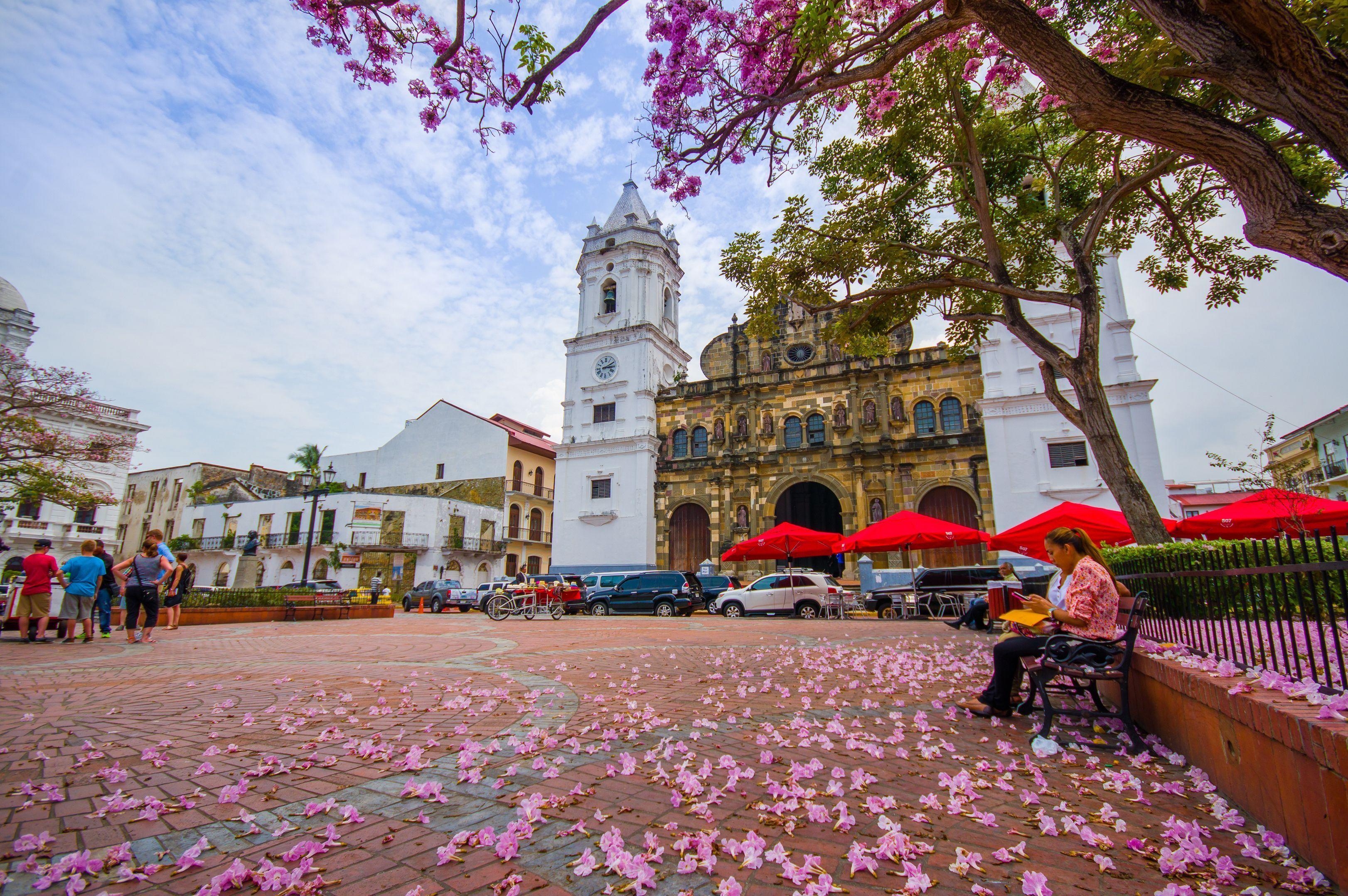
Experience the historical, charming and vibrant neighborhood of Casco Antiguo. Casco Antiguo, also known as Casco Viejo, or the ‘old quarter,” is Panama City’s historic district. Considered a UNESCO Cultural World Heritage Site, the district dates back to 1673, and features vibrant plazas and picturesque brick-paved streets surrounded by colorful buildings. The area is ideal for walking, discovering history and enjoying a variety of fine cuisine. Come for some of the city’s best gastronomy, culture and photo opps, and stay to mingle with the locals in the heart of the nightlife scene.
In 1671, after the Pirate Henry Morgan attacked, looted and destroyed the Old City, Panama Viejo. Its residents and settlers, desperate for a safer and easier location to defend themselves against future seige, decided on what is now Casco Viejo (The Old Quarter).
This unique walled city, consisting of 16th & 17th Century Spanish Colonial Architecture, is a gem which was unknown to most of the outside world until 1997 when UNESCO named Casco Viejo a World Heritage Site. Shortly thereafter, investments and foreign expats started to poor into Casco Viejo (at that time a deteriorating slum which most Panamanians wouldn't dare visit) in what has been one of the greatest and fastest urban revitalizations in all of the Americas!
Today, Casco Viejo (aka. Casco Antiguo, San Felipe or El Casco) is a vibrant community consisting of a sharp contrast of old and new, local and foreign. The buildings are in various stages or redevelopment and renovation, with a strictly enforced standard of Historical Authenticity. There is tremendous culture and a feeling which is unique only to this neighborhood in Panama.
4. ZIP-line experience at Soberania National Park
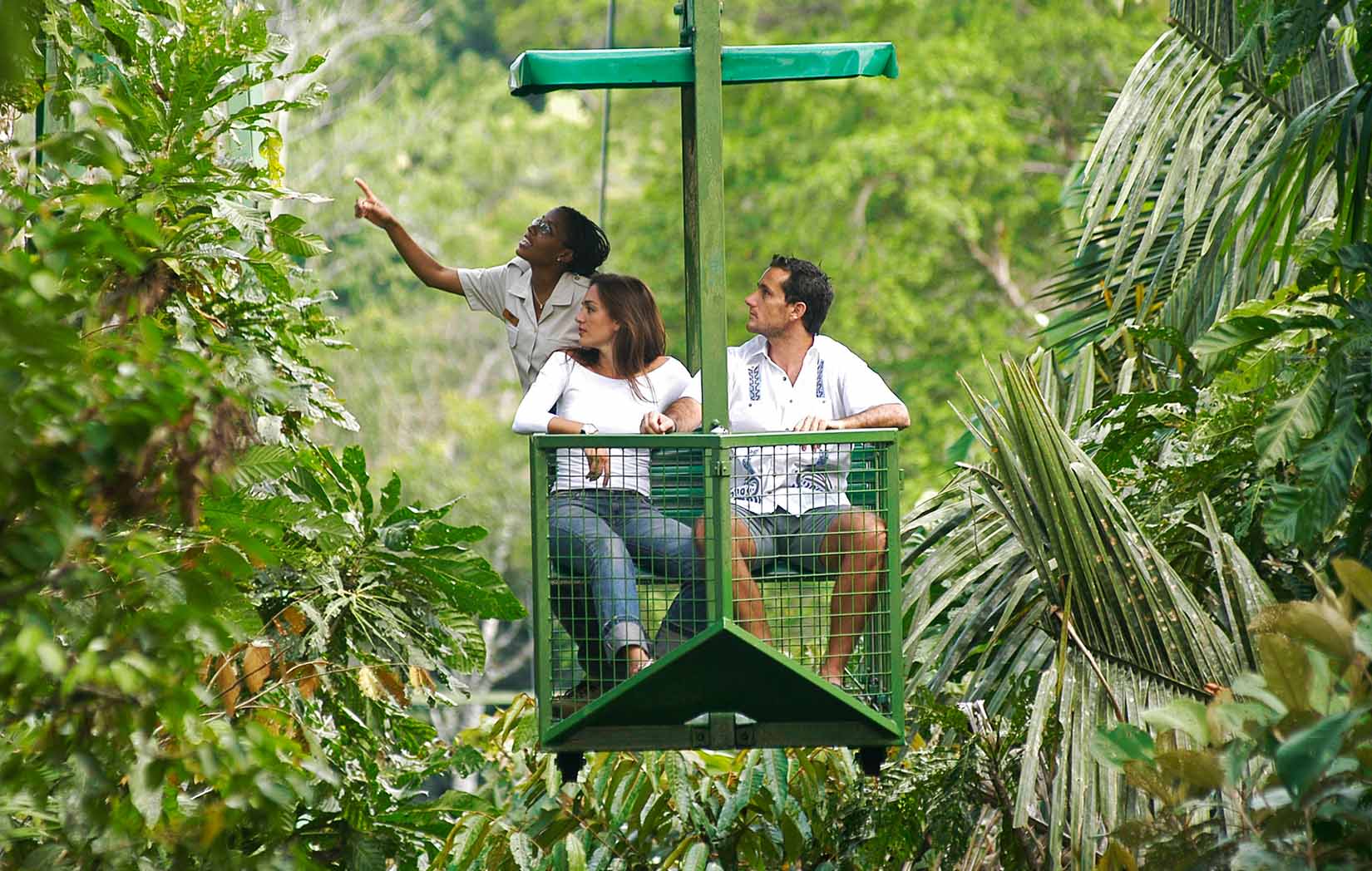
Soberania National Park is the most accessible national park from Panama City, and the perfect nature-filled day trip for the whole family. Just 45 minutes from the city, this park sits near the banks of the Panama Canal on the canal zone construction site, and spans 55,000 acres. The park contains dry rainforest, countless animal species, and the Chagres River, which runs through the middle of it.
Here you will have an opportunity to enjoy firsthand the tropical forest in an exciting adventure that will allow you to rise through the treetops in a series of zip lines, enjoying the wonders of nature from an incredible (and safe) point of view.
You can glide over the treetops of the tropical forest over 1.4 kilometers in length divided into 10 cables and 12 stations, admire the most incredible collection of natural landscapes that border the Panama Canal and Soberania National Park and enjoy a different view of the Canal and the Chagres River.
Recommended to combine with visit the Sloth rescue center, the butterflies and orchid expositions, and the Frogs center at Gamboa Wild life Rescue center, or Aerial Tram and Monkey Island boat tour.
After the tour you can have lunch in the Gamboa resort.
5. Sloth Sanctuary and Nature Labs at Gamboa wildlife rescue center

Within the resort’s sprawling botanical gardens, you will find distinct nature exhibits, designed to entertain and educate you about the unique fauna and flora of this tropical paradise.
The exhibition area is composed of three exhibits that include: Butterfly Farm, Frog Garden, and Orchid Nursery.
Also, included in the tour you will visit the Gamboa Wildlife Rescue Center where you will see many animals that have been rescued by the Pan American Conservation Association, and finished the tour with a visit to the Sloth Sanctuary, the only one in Panama.
Wildlife Rescue Center: The Wildlife Rescue Center receives and rehabilitates injured, sick and orphaned animals, giving them the care and attention they need for their improvement, always under the supervision of the Pan American Conservation Association experts. In addition to being a safe space for them, it helps their mission to promote environmental awareness through education and highlighting the importance of the community's role in protecting wildlife.
Butterfly Farm: These beautiful insects have been reproduced in a butterfly farm, in order to show visitors around 20 species of butterflies native to Panama.
Orchid Nursery: This is perhaps one of the few orchid nurseries, in Panama, with an educational purpose. Unlike commercial nurseries, here you can see a large number of wild species native to our country, including some miniature ones and the Panama ́s National Flower.
Frog Pond: a garden that recreates almost perfect and natural, lush Panamanian rainforest. It is the new home to hundreds of frogs Darts native of tropical America, with more than 30 combinations of bright colors, where it will be possible to observe the complete cycle from mating, breeding, feeding and even territorial disputes between males.
6. Boquete Tree Trek Canopy Tour
.jpg)
Boquete is a natural setting with cool temperatures that invite you to enjoy its exquisite award-winning delicacy worldwide: coffee.
The fluttering and chirping of the birds, calls you to walk the paths while mother nature invades your senses. Its hanging bridges and relaxing walks, its crystal clear waters, and its abundant and diverse flowers become part of your experience in Boquete. Boquete Tree Trek Canopy Tour consists of 12 zip lines and 14 platforms. It’s one of the best zip lines in Panama and Central America; just imagine 3,5 km of pure adrenaline! In the afternoon, you can relax, hike looking for resplendent Quetzal birds, or explore the coffee farm and learn about the entire coffee process, from bean to cup.
7. The Biodiversity Museum
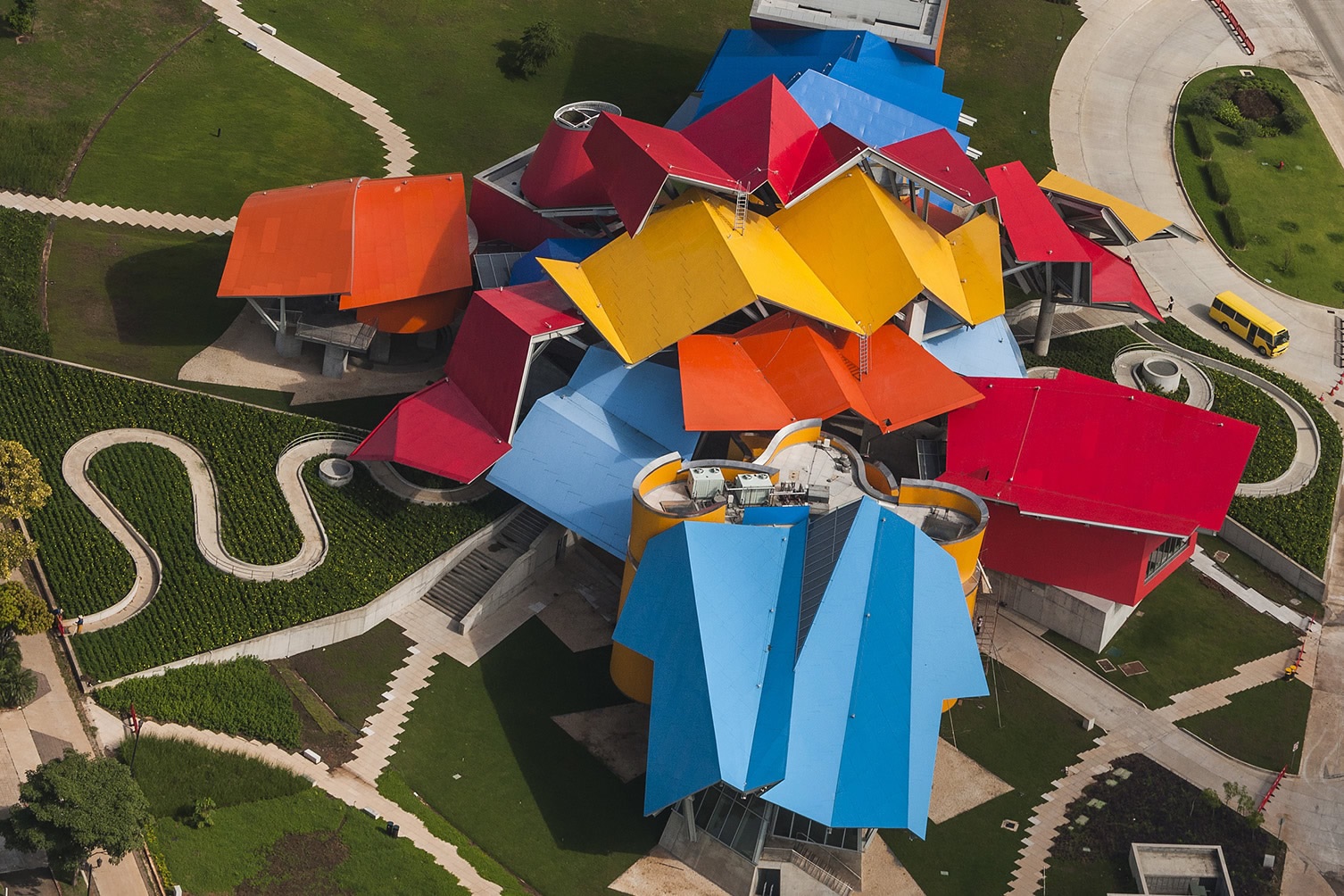
The Biomuseo is the latest cultural and eco-tourism destination! The Biomuseo is situated within view of the Pacific Ocean to the east and the entrance to the Panama Canal to the west, placing it at the forefront of a new cultural and eco-tourist center for the region.
The striking and colorful geometric building was designed by renowned architect, Frank Gehry, the mastermind behind iconic buildings around the world, such as the Guggenheim Museum in Bilbao, Spain and the Louis Vuitton Foundation in Paris. When you visit The Biomuseo, you’ll get to see Gehry’s first design in Latin America.
Inside the space, you’ll find 8 galleries: ‘The Showcase of Biodiversity’; ‘The Panamarama’—a 3-level projection of Panama’s ecosystems; ‘Building the Bridge’, which explains how Panama was formed; ‘Worlds Collide’—an exposition on the animals of the region; ‘The Human Path’—where you can learn about the human history of the area; ‘Oceans Divided’—an aquarium; ‘The Living Web’—a 15-meter sculpture; and finally “Panama is the Museum,” an interactive view of the relationship between the cultural and ecological diversity of Panama.
After you check out the permanent and temporary indoor interactive exhibits, venture into the many outdoor spaces such as the Garden of Microdiversity, The Garden of Evolution and The Garden of Crops. While you’re out there, you may even be able to catch a view of ships passing through the Canal and under the Bridge of the Americas.
At the heart of Frank Gehry’s design for the Biomuseo is a public outdoor atrium covered by a lively assemblage of metal canopies in different shapes and strong colors: blue, red, yellow, green.
8. Bocas del Toro
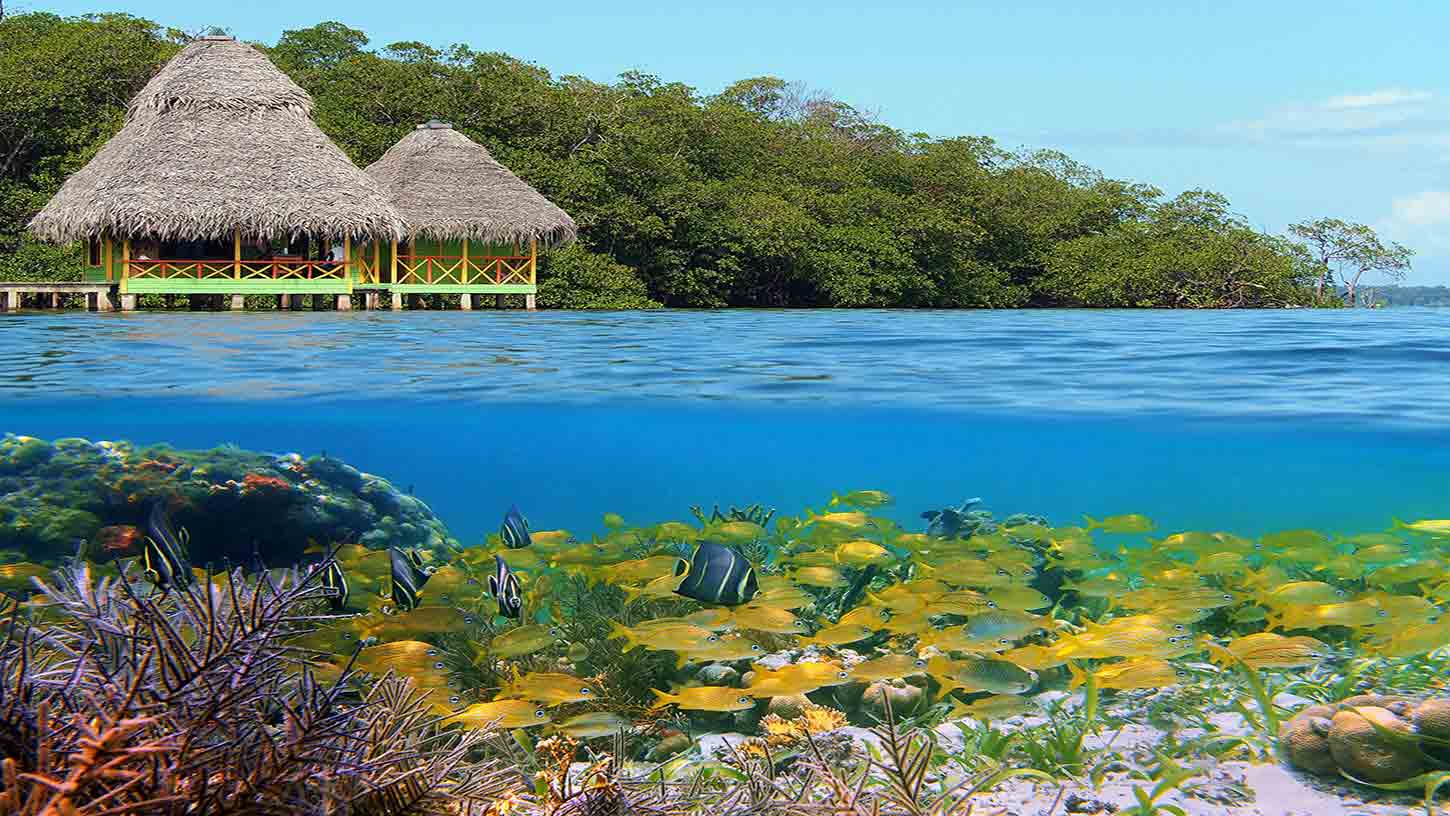
Representing Panama’s vibrant Caribbean culture, the Bocas Del Toro province comprises part of Panama’s mainland, as well as a chain of islands in the Caribbean Sea. In Bocas, expect to find a relatively undeveloped landscape, and a friendly, laid-back vibe. Bocas is also home to a tropical rainforest, some of the area’s indigenous cultures, like the Ngöbe and NasoTjerdi, as well as many of the country’s most popular beaches. There are three main islands in Bocas Del Toro: The main island, Isla Colon; Isla Bastimentos, which is one of the largest islands in Panama;
and the small island of Isla Carenero.
Bocas Del Toro is home to a natural laboratory for evolutionary study and climate change, as well as Panama's first Mission Blue Hope Spot, a program that focuses on the rehabilitation and preservation of the marine ecosystem.
While visiting Bocas Del Toro, you can spend your days exploring the local nature, and your evenings enjoying the nightlife. If you’re an experienced diver, you may be able to take a science dive with the Smithsonian. For more accessible marine activity, head to Isla Bastimentos National Park, where you can surf, snorkel and dive. With 95% of the Caribbean coral species found in Bocas del Toro, you can expect to see a wonderful variety of tropical reef creatures including nurse sharks, stingrays and many species of crab and lobster. For even more variety, take a bioluminescent tour, or explore the Nivida Bat Cave.
9. Visit to the Emberá Indigenous Community
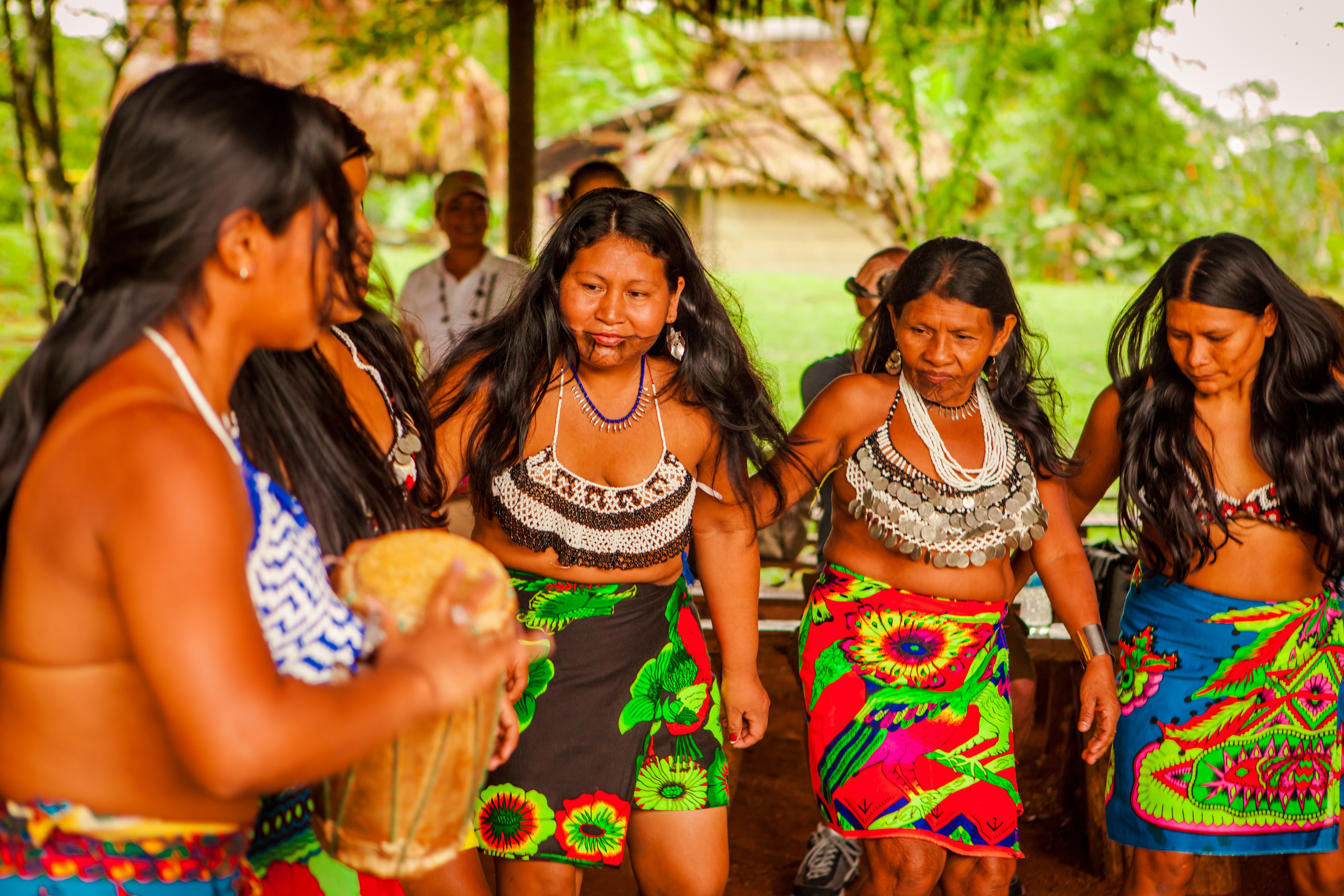
There are approximately 33,000 people in Panama who identify themselves as Emberá, and many of these communities continue to uphold their traditional culture and language.
Though the Emberá historically lived in the rainforest and in family settlements along the Chagres River, they began to congregate in villages beginning in the 1960’s, with some members of the community leaving behind the traditional lifestyle to move to the city.
Today, the community is well known for its handmade crafts such as baskets and carved statues, as well as temporary tattoos made from the black dye of Jagua fruit. The Emberá women expertly craft baskets from the leaves of Chunga (black palm), often adorning them with geometrical patterns or animal iconography. Some of the baskets are black and white, while others use vivid natural dyes, and the highest quality baskets are so tightly woven they can hold water.
The Emberá women are also known for their animal carvings, which they make out of both Tagua nuts and Cocobolo. These intricately carved statues make for wonderful souvenirs and gifts. Rivers are integral to the Emberá lifestyle, since their food comes from fish and plantains—both of which are plentiful in river environments.
The Emberá carry a strong mission of environmental conservationism and they work hard to provide tours that minimally impact their surrounding environment, while allowing visitors to hear their oral history and learn about their lifestyle and cosmogenic beliefs, which is based on the idea that everything, both animate and inanimate, is imbued with spirit. When you visit, you’ll likely get to travel in a traditional dug-out canoe, like the ones that the Emberá use.
You may also experience the traditional Emberá dance and music, or perhaps try the traditional Jagua body painting.
10. Kayaking Tour & Monkey Islands speed boat tour at Gatun Lake Floating Lodge

Start your Panama tour by getting some exercise in the great outdoors. Breathe in that fresh air as you glide past a tropical paradise.
You will be transferred via motor boat to a floating lodge. From here you will board two person kayaks and head up a nearby river. The river is narrow and winds deeper into the surrounding forest.
Depending on the time of year, there may be an early morning fog. Many types of birds and animals can be viewed in their native habitat. On the return trip back down river we will visit a special place where you can swim and cool off.
As we return to the dock via motorboat, we will visit Monkey Island to see wildlife. Here you will find abundant fauna represented by tortoises, crocodiles, different birds, sloths, iguanas, and several kinds of monkeys such as capuchins, tamarins, and howlers’ monkeys.
After the tour you are going to have lunch in the Gamboa resort.
11. Whale watching in Pearl islands
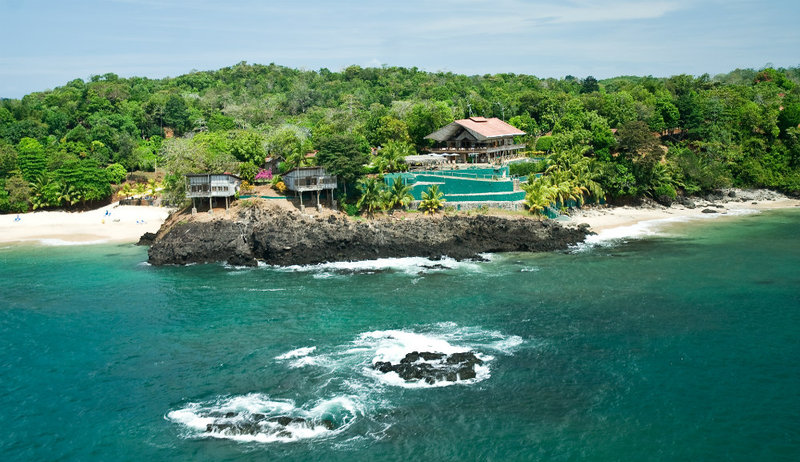
Once a popular tourist destination for the rich and famous, the Pearl Islands have become more accessible for others who want to experience the tremendous natural beauty of the area. The Pearl Islands archipelago consists of over 200 islands and islets—mostly uninhabited—off the Pacific coast in the Gulf of Panama. The largest of the islands is Isla Del Rey, but tourist favorites include Contadora Island, with over 13 beaches, and Isla Saboga. On a trip to the Pearl Islands, you can expect to find beautiful white sand beaches, opportunities for scuba diving and whale watching, as well as well-preserved nature and marine life.
There are many ways to enjoy the picturesque beaches of the Pearl Islands. Whale watching tours during whale mating season between July and October are popular in the area, as well as windsurfing and paddle boarding. For those who enjoy snorkeling, expect to see massive schools of fish in the crystal clear waters—like, up to 50,000! For a traditional beach day of swimming, restaurant-hopping and lounging, check out the resort area of Cantadora Island with more than 13 beaches and a wide array of hotels, resorts, condos and villas. While there, you can also visit one of the sailing schools to go for a sail, or enjoy premium fishing all year around. Next, head to one of the more remote islands for a different experience. In Saboga you can hike jungle trails and interact with the local people that live in the Saboga village.
